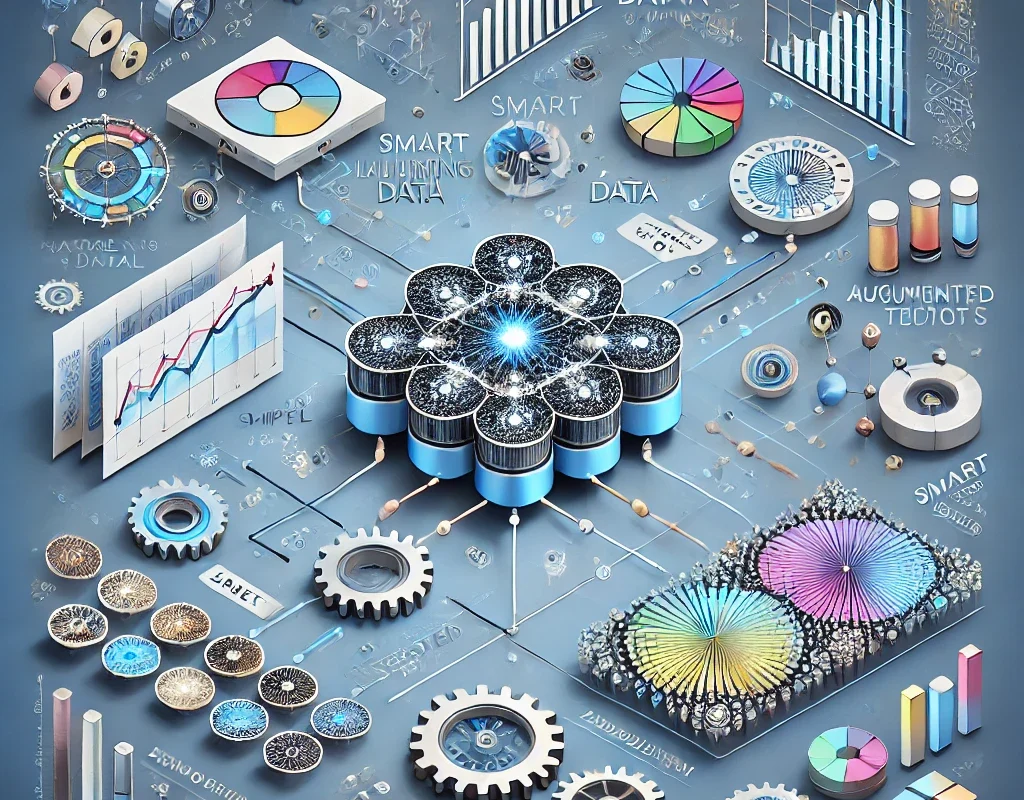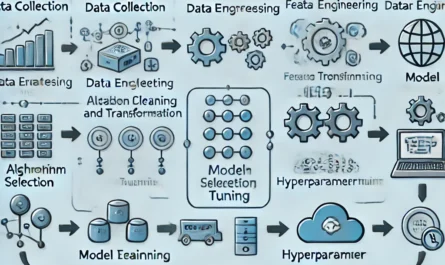In today’s data-driven world, machine learning is transforming industries, but one common challenge remains—how to train machine learning models with limited data. With the increasing demand for accurate models in various sectors, it may seem counterintuitive that some of the most promising applications often face the hurdle of insufficient data. But don’t worry! While large datasets are ideal for training complex models, it’s entirely possible to build robust, high-performing machine learning models even with small datasets by leveraging smart strategies.
Understanding the Challenges of Limited Data in Machine Learning
Training machine learning models requires a significant amount of data to avoid overfitting and achieve generalization. When the dataset is limited, machine learning models tend to capture noise, leading to inaccurate predictions on unseen data. But limited data doesn’t mean you’re stuck with poor performance. The key is applying creative solutions to maximize the value of the data you do have.
When training with limited data, your model’s performance may struggle because:
- Risk of overfitting: With too little data, models memorize specific examples, failing to generalize well to new data.
- Bias and variance trade-off: Small datasets can introduce bias, and balancing this bias with variance is challenging.
- Data imbalance: Limited data often means certain classes or features are underrepresented, affecting prediction accuracy.
Fortunately, innovative approaches can be applied to minimize these challenges.
Data Augmentation Techniques to Overcome Limited Data
When it comes to training machine learning models with limited data, one of the most effective strategies is data augmentation. By artificially increasing the size of the dataset through slight modifications, you can create new, synthetic samples that retain the same characteristics as the original data.
For image data, augmentation might include:
- Rotating or flipping images to capture different angles.
- Color adjustments such as altering brightness or contrast.
- Cropping and resizing parts of images to focus on different features.
In text data, augmentation strategies may include:
- Synonym replacement to introduce slight variations in word choices.
- Random insertion or deletion of words to create new sentences.
- Back-translation, where text is translated to another language and then back to the original.
In time-series data, augmentation can involve:
- Random jittering (adding noise to the data).
- Time warping (altering the speed of the data).
- Window slicing (cutting data into different windows).
These techniques prevent overfitting by forcing the model to learn more robust representations of the data.
Transfer Learning: Leveraging Pretrained Models
When faced with limited data, transfer learning offers a powerful solution. This approach allows you to leverage knowledge gained from training on large datasets to solve similar tasks with smaller datasets. The pretrained models, such as VGGNet or ResNet for images, or BERT for text, have already learned valuable features that can be transferred to your specific problem.
In transfer learning, the process usually involves:
- Freezing the early layers of the pretrained model (where general features like edges or patterns are learned).
- Fine-tuning the later layers to adapt the model to your limited dataset and the specific nuances of your task.
This strategy allows you to achieve excellent performance even with a small dataset because you’re standing on the shoulders of models trained on millions of data points.
Active Learning: Selecting the Most Informative Data Points
In cases of limited data, it’s crucial to make the most of each data point. Active learning helps by strategically selecting the most informative samples to label and include in the training set.
The active learning workflow typically involves:
- Training a model on a small initial subset of data.
- Using the model to predict on the rest of the unlabeled data.
- Selecting data points where the model’s predictions are uncertain (e.g., near the decision boundary).
- Manually labeling these uncertain points and retraining the model.
By focusing on the most informative data points, active learning reduces the amount of labeled data needed while still improving model performance.
Using Cross-Validation for Reliable Evaluation
When training machine learning models on limited data, cross-validation becomes essential for robust model evaluation. Rather than holding out a significant portion of the small dataset for testing, cross-validation allows you to use the entire dataset for training and testing by splitting it into multiple folds.
The most common form of cross-validation is k-fold cross-validation, where the dataset is divided into k subsets (folds). The model is trained on k-1 folds and tested on the remaining fold. This process is repeated k times, with each fold used as a test set once.
Cross-validation not only provides a more reliable estimate of model performance but also ensures that all available data is used efficiently.
Synthetic Data Generation: Expanding the Dataset
Another powerful strategy for dealing with limited data is the creation of synthetic data. Synthetic data is artificially generated data that mimics the statistical properties of the original dataset. This approach can be particularly effective when your original dataset is too small or sensitive to share.
Generative Adversarial Networks (GANs) are widely used to create synthetic data for images, text, and even tabular data. A GAN consists of two models: a generator that produces new data and a discriminator that distinguishes between real and fake data. As these models compete, the generator becomes increasingly adept at creating realistic synthetic data that can augment your original dataset.
Few-Shot Learning: Learning from Minimal Data
Few-shot learning is a cutting-edge technique where models are designed to learn from just a handful of examples. This approach leverages prior knowledge and powerful representation learning techniques to generalize from very few samples.
Some common few-shot learning methods include:
- Meta-learning, where the model learns how to learn new tasks quickly by training across multiple related tasks.
- Prototypical networks, which create prototype representations of each class and classify new examples based on their proximity to these prototypes.
Few-shot learning is particularly useful in applications where gathering data is expensive or time-consuming, such as in medical imaging or rare language processing.
Ensemble Learning: Combining Models for Better Accuracy
With limited data, training a single model can lead to overfitting. Ensemble learning is a technique where multiple models are combined to improve overall performance and reduce variance. By blending models, the ensemble averages out the individual errors of each model, leading to more accurate predictions.
Common ensemble techniques include:
- Bagging, where multiple instances of the same model type are trained on different subsets of the data.
- Boosting, where models are trained sequentially, with each new model focusing on correcting the errors made by the previous models.
Using ensembles allows you to maximize the performance of your model even when the data is scarce.
Feature Engineering: Extracting Maximum Information
When data is limited, feature engineering can be a game-changer. By carefully selecting and transforming features, you can extract more information from your dataset and improve model performance.
Feature engineering techniques include:
- Creating new features by combining existing ones (e.g., interaction terms or polynomial features).
- Normalization or scaling to ensure that features are on the same scale.
- Encoding categorical variables using techniques like one-hot encoding or target encoding.
With the right feature set, your model can generalize better to new data, even if the training set is limited.
Leveraging Unsupervised Learning for Pretraining
Before diving into supervised learning on limited data, it can be beneficial to start with unsupervised learning. By learning the underlying structure of the data without needing labels, unsupervised methods can help you extract valuable features that improve downstream performance in supervised tasks.
For example:
- Autoencoders can learn to compress and reconstruct input data, capturing important patterns in the process.
- Clustering algorithms like k-means can help group similar data points together, which can then be used to augment your labeled dataset.
Unsupervised learning provides a way to make the most of unlabeled data, which can be a lifesaver when working with limited labeled examples.
You can also read; How to Get Started with Artificial Intelligence for Beginners
Practical Tools for Training Models with Limited Data
Several tools and frameworks support the development of machine learning models with limited data:
- Keras and TensorFlow provide robust implementations of transfer learning and data augmentation techniques.
- Hugging Face Transformers offer a wide range of pretrained language models that can be fine-tuned for specific NLP tasks.
- DataRobot and AutoML platforms help automate feature engineering, model selection, and hyperparameter tuning, which is particularly helpful when working with limited data.



